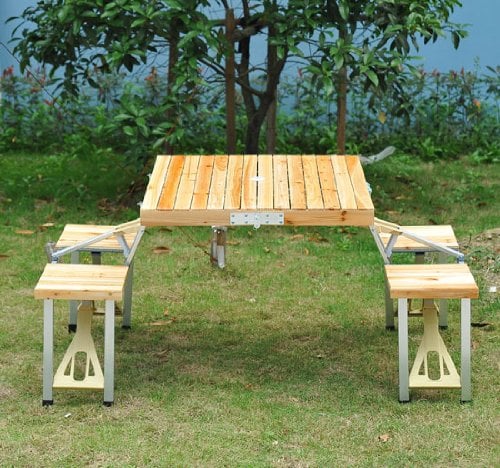 www.anda.cl ```html
www.anda.cl ```html Introduction: Building Your Own Simple Wooden Birdhouse This post will guide you through building a basic birdhouse, perfect for attracting feathered friends to your backyard. It's a simple woodworking project suitable for beginners and can be completed in a single afternoon.
Materials You'll Need Here's what you'll need to gather before you start:
- A piece of untreated lumber (pine, cedar, or redwood are good choices) approximately 1 ft x 4 ft
- Wood glue
- Nails or screws (1 1/4 inch)
- Saw (hand saw or power saw)
- Drill with various sized drill bits (including one for the entrance hole)
- Measuring tape or ruler
- Pencil
- Sandpaper (120 grit and 220 grit)
- Clamps (optional, but helpful)
- Safety glasses
- Ear protection (if using power tools)
Step 1: Cutting the Pieces Using the following dimensions, carefully measure and cut the wood pieces:
- Front: 6 inches wide x 8 inches tall
- Back: 6 inches wide x 10 inches tall
- Sides (2 pieces): 6 inches wide x 7 inches tall
- Bottom: 6 inches wide x 6 inches deep
- Roof (2 pieces): 4 1/2 inches wide x 7 1/2 inches deep
Step 2: Assembling the Box Apply wood glue to the edges of the bottom piece. Position the front, back, and side pieces on top of the glued bottom, ensuring they are flush. Clamp the pieces together (if available) or hold them firmly in place. Using nails or screws, secure the pieces together to form the box.
Step 3: Attaching the Roof Apply wood glue to the top edges of the front, back, and side pieces. Position the roof pieces on top, ensuring they overhang slightly on all sides for weather protection. Nail or screw the roof pieces securely to the box.
Step 4: Drilling the Entrance Hole and Adding Ventilation Choose the size of the entrance hole based on the type of bird you want to attract (1 1/2 inches is a good all-around size). Drill the hole in the center of the front piece, about 2 inches down from the top. Drill a few small ventilation holes near the top of the side pieces to provide airflow.
Step 5: Sanding and Finishing Use sandpaper to smooth all the edges and surfaces of the birdhouse. Start with 120-grit sandpaper to remove any rough spots, then finish with 220-grit sandpaper for a smoother finish. Avoid painting the inside of the birdhouse. If you choose to paint the exterior, use a non-toxic, water-based paint.
Step 6: Mounting the Birdhouse Decide where you want to mount your birdhouse. Options include attaching it to a tree, post, or building. Ensure the location is safe from predators and has good drainage. Use appropriate hardware to securely mount the birdhouse.
Conclusion: Enjoy Your New Birdhouse! Congratulations! You've built your own birdhouse. Now, sit back and enjoy watching the birds move in. Remember to clean out the birdhouse annually after the nesting season to keep it a healthy and inviting home for your feathered friends.
``` Easy Abre Las Puertas De Primera Tienda En La Unión
 www.anda.cl
www.anda.cl Easy Things To Draw (drawing Ideas When You're Bored)
 creativebooster.net
creativebooster.net Easy Chile
 www.revistaenconcreto.cl
www.revistaenconcreto.cl  www.finewoodworking.com
www.finewoodworking.com  www.finewoodworking.com
www.finewoodworking.com  fine-woodworking.magazinesubscriberservices.com
fine-woodworking.magazinesubscriberservices.com  architecturebeast.com
architecturebeast.com  www.vecteezy.com
www.vecteezy.com  construction2style.com
construction2style.com  www.riibaa.com
www.riibaa.com  ar.inspiredpencil.com
ar.inspiredpencil.com  nbxuanming.en.made-in-china.com
nbxuanming.en.made-in-china.com  www.walmart.com ```html
www.walmart.com ```html  www.homedepot.com
www.homedepot.com  industrialladder.com
industrialladder.com  guidewoodworking.blogspot.com
guidewoodworking.blogspot.com  freewoodworkingplan.com
freewoodworkingplan.com  stansplans.com
stansplans.com  www.pinterest.com ```html
www.pinterest.com ```html  theindiacrafthouse.com
theindiacrafthouse.com  www.hotzxgirl.com
www.hotzxgirl.com  uk.pinterest.com
uk.pinterest.com  www.carvingjunkies.com
www.carvingjunkies.com  www.carvingjunkies.com
www.carvingjunkies.com  raillab.jp
raillab.jp  www.trulia.com
www.trulia.com  cranemarket.com
cranemarket.com  www.amazon.com ```html
www.amazon.com ```html  www.pinterest.com
www.pinterest.com  www.amazon.co.uk
www.amazon.co.uk  awesomestufftobuy.com
awesomestufftobuy.com  husto.co.ke
husto.co.ke  awesomestufftobuy.com
awesomestufftobuy.com  nativecamp.net
nativecamp.net  international-adviser.com
international-adviser.com  insidebitcoins.com
insidebitcoins.com  mycoaching.in
mycoaching.in  www.simpleskincare.com
www.simpleskincare.com  keepingbusy.com
keepingbusy.com